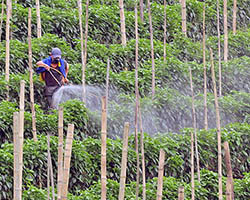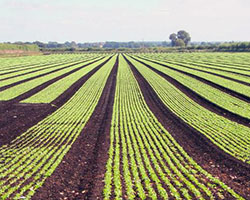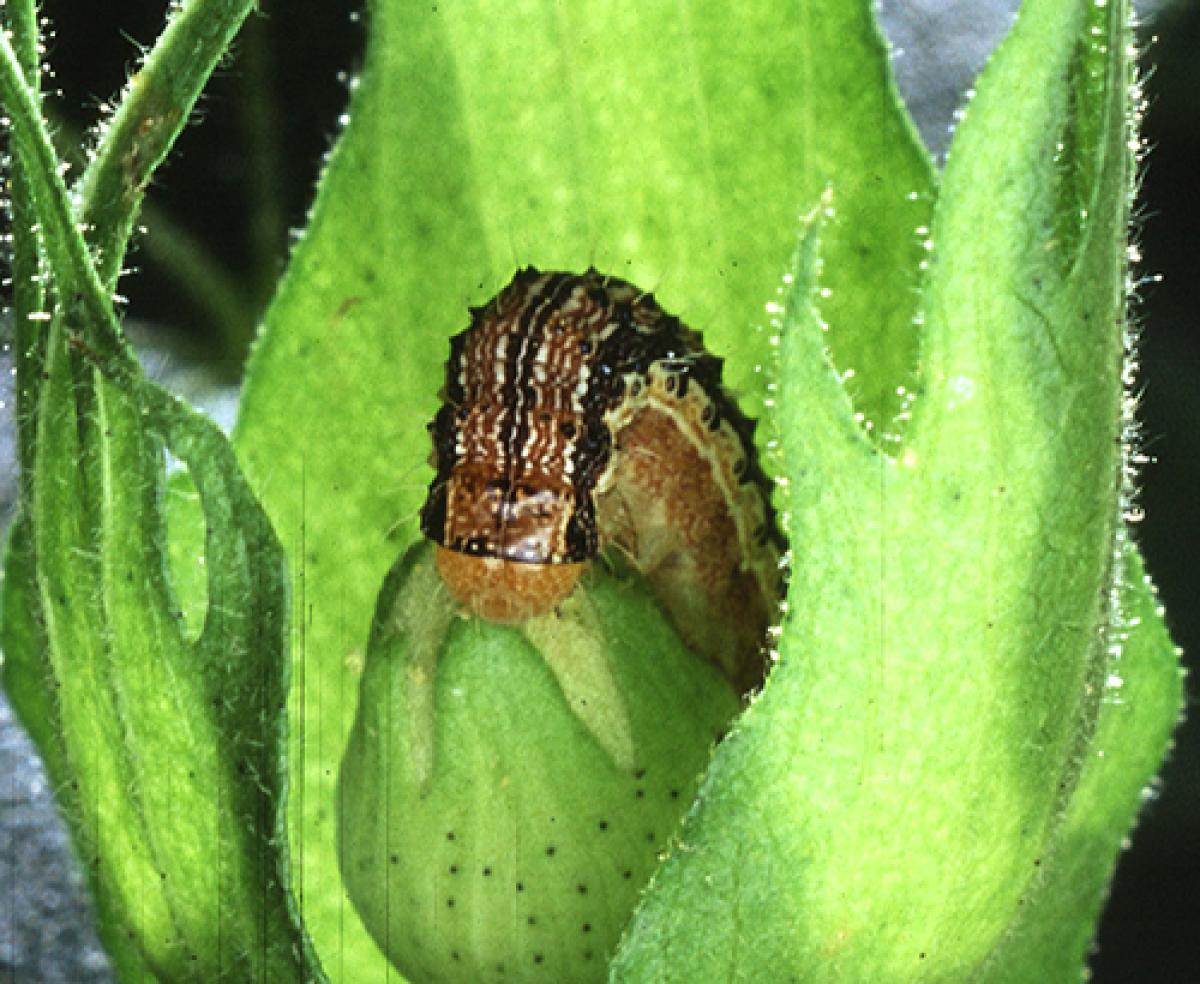
To Grow or Not to Grow GMOs
What's in the Story?

The sun beats down on your back as you lean forward and yank another bug-infested plant out of the soil. Your sweaty shirt sticks to you and you can feel the muscles in your back aching. This is too much work to invest for a field of failed crops. You lost a lot of plants this year, so you need to make a decision: What kind of seeds should you plant for the next harvest?
Making New Choices for Farmers
If you grow crops like corn, soybeans, or cotton for a living, the amount of money you can make depends on many things. How was the weather this year? Did you pick the right kind of fertilizer? Did you pick the right crop and seeds? If you made good choices, did other farmers in your area do the same? If all of your neighbors grew a lot of the same crop, then prices for that crop will go down. Even if your yield was great, your profit won’t be.

One of the choices farmers can make is to choose crops that aren’t harmed by chemicals that kill insects (pesticides) and weeds (herbicides). Insects and weeds reduce the amount of crops farmers can grow.
To create crops that are not harmed by pesticides or herbicides, agriculture companies use biotechnology to modify the genes of the crops. For example, farmers can choose corn and cotton that have been genetically modified to create their own pesticide as they grow. Farmers using these seeds don’t need to spray as much pesticide, which means less pesticide ends up washing off the fields and into streams. Researchers found that using genetically modified crops helps farmers grow more crops, use less pesticides, and end up with more profit.
A Study of Studies
To get a broad idea of how GMOs affect farmer’s profits, pesticide use, and crop yields, the researchers couldn’t just study one group of farmers. Instead, they looked at many studies of other people’s research. This was harder than it sounds because the researchers needed to compare studies that used different methods. They used data and results from 147 different studies. This type of article is called a meta-analysis. It’s very helpful to other scientists because it combines the results of many studies.

How did the researchers know what studies to look at? They did scientific literature searches using search engines. Just searching by keywords they started with a list of 24,079 articles. They narrowed this down by several factors such as whether the studies were written in English, and what crops were tested. They ended up looking at 147 studies.
A lot of the 147 studies would not be persuasive on their own. Some of them were not peer-reviewed, and some didn’t follow standards like reporting how many farms were studied. But by including so many studies, the authors were able to come to meaningful conclusions.
The researchers compared studies using statistical models. These models compared the outcomes of a study versus the amount of inputs famers were investing in their crops. The results were weighted for the number of observations (studies focused on fewer observations counted more heavily). In this way, studies that report many different data sets (and so might be repeating data sets from other studies) did not cause over or underestimation of measurements.
Do GM Crops Help Farmers?
The authors measured five outcomes:
- Yield: How much did farmers grow?
- Pesticide quantity: How much pesticide did farmers spray?
- Pesticide cost: How much money did farmers have to spend on pesticide(s)?
- Total production cost: How much did farmers have to spend?
- Farmer profits: Were farmers able to sell their crops for more than what they spent? If so, how much more?
What did they learn? On average, farmers who planted GMOs used 37% less pesticide to grow more food, and those farmers made a 68% larger profit.

The researchers also found that using insecticide-resistant crops led to 25% greater profit while using herbicide-tolerant crops led to only 9% greater profit.
Farmers in developing countries saw 60% greater profit increases than farmers in developed countries. This means that using GMOs was much more helpful to farmers in developing countries than to farmers in more developed countries. Why?
First, farmers were able to grow more crops and spent less on pesticide in developing countries. Second, most GM crops are patented in developed countries but not in developing countries. Patents give inventors exclusive rights to sell their inventions. If a government of a country does not limit who can sell the invention, then people in that country can buy the invention for less money. While this is great for farmers in developing countries, it isn’t so helpful to US farmers or to the companies that sell seeds.
Following the Money

Speaking of who sells the seeds … did those companies pay for this research? Some of them, yes. There is a lot of money in GM crops, so businesses have an incentive to support scientific studies that show GM crops are useful. If a company that sells GM seeds paid for a study, then it is a fair question to ask whether the scientists involved were biased.
The authors of this meta-analysis found that the results of the studies they analyzed did not depend on who paid for the research, so the scientists were not biased.
What’s Next for GMOs?
Additional images via Wikimedia Commons. Cotton bullworm by PD-USGOV-USDA-ARS.
Bibliographic details:
- Article: To Grow or Not to Grow GMOs
- Author(s): Sharyn Horowitz
- Publisher: Arizona State University School of Life Sciences Ask A Biologist
- Site name: ASU - Ask A Biologist
- Date published:
- Date accessed:
- Link: https://askabiologist.asu.edu/plosable/grow-or-not-grow-gmos
APA Style
Sharyn Horowitz. (). To Grow or Not to Grow GMOs. ASU - Ask A Biologist. Retrieved from https://askabiologist.asu.edu/plosable/grow-or-not-grow-gmos
Chicago Manual of Style
Sharyn Horowitz. "To Grow or Not to Grow GMOs". ASU - Ask A Biologist. . https://askabiologist.asu.edu/plosable/grow-or-not-grow-gmos
Sharyn Horowitz. "To Grow or Not to Grow GMOs". ASU - Ask A Biologist. . ASU - Ask A Biologist, Web. https://askabiologist.asu.edu/plosable/grow-or-not-grow-gmos
MLA 2017 Style

If you're still unsure about what a GMO is exactly, visit our story What's a GMO?
Be Part of
Ask A Biologist
By volunteering, or simply sending us feedback on the site. Scientists, teachers, writers, illustrators, and translators are all important to the program. If you are interested in helping with the website we have a Volunteers page to get the process started.

